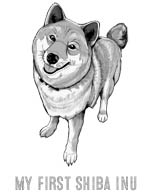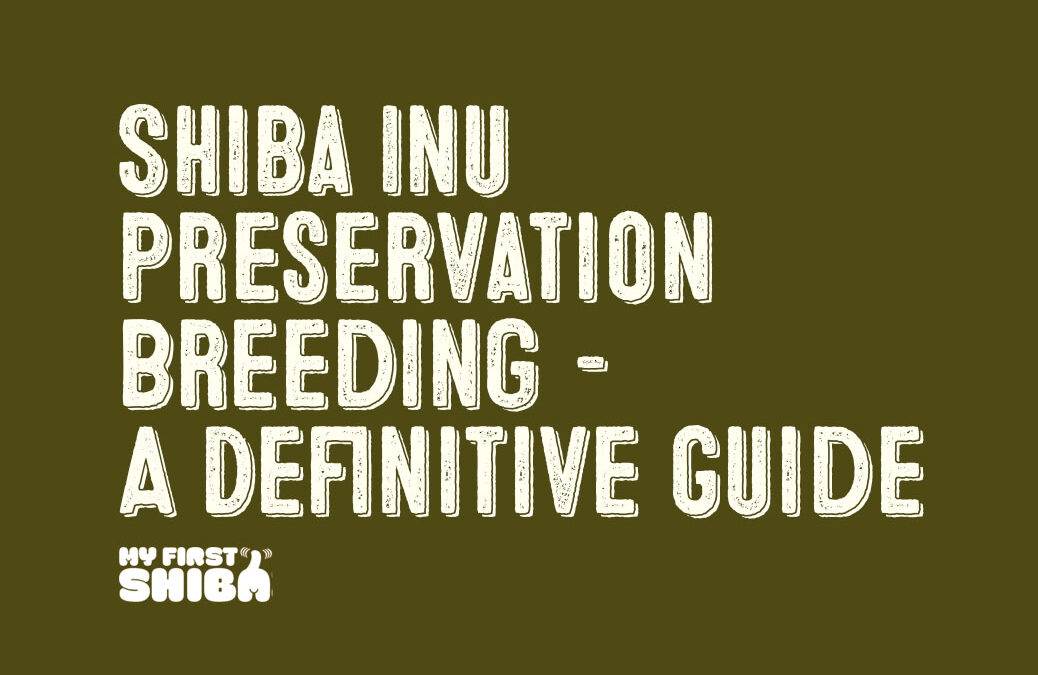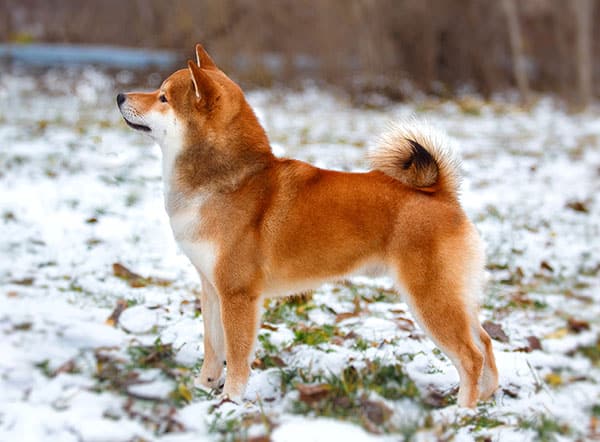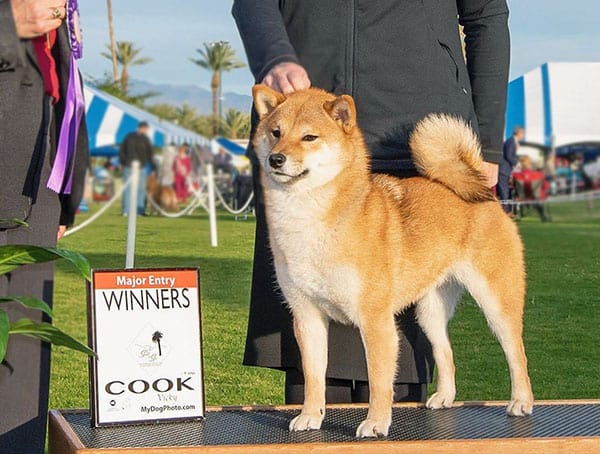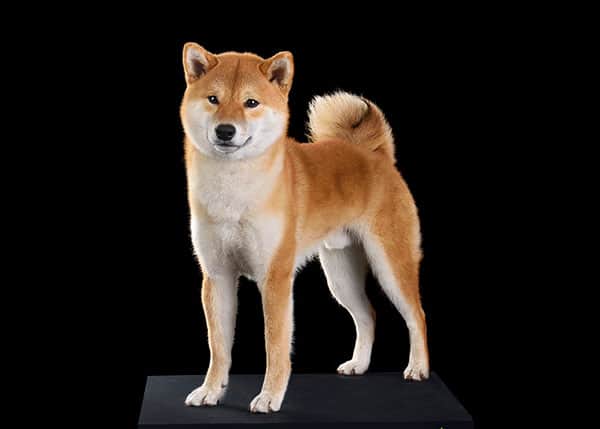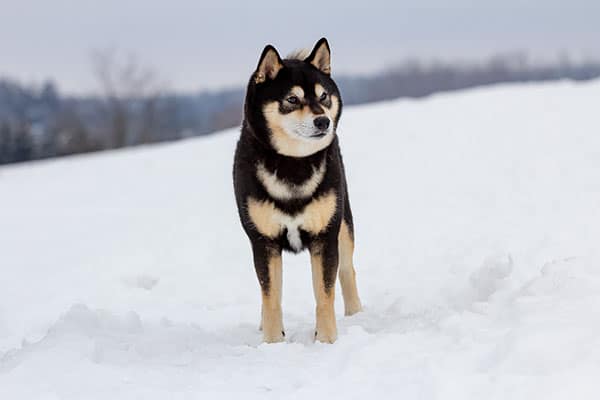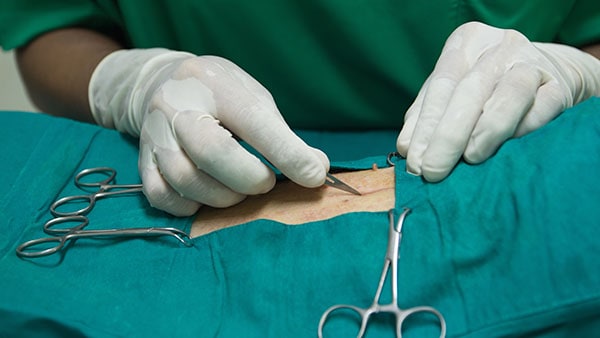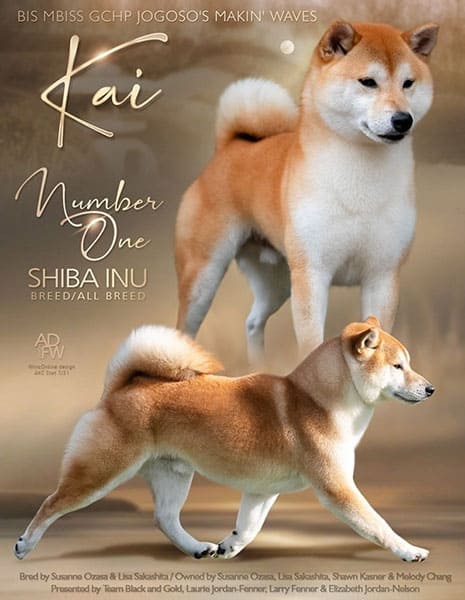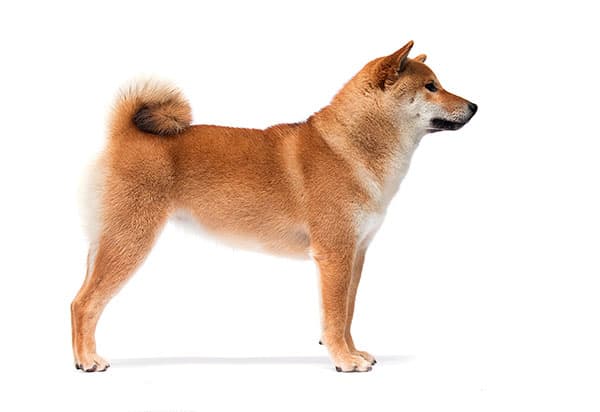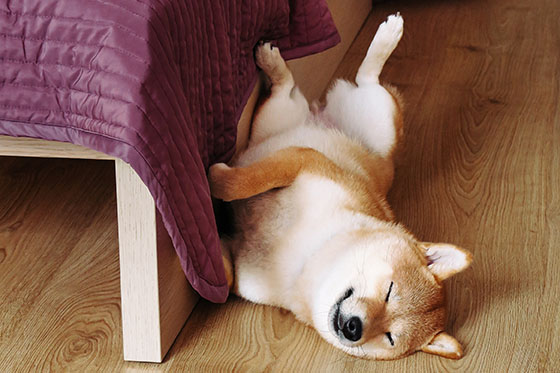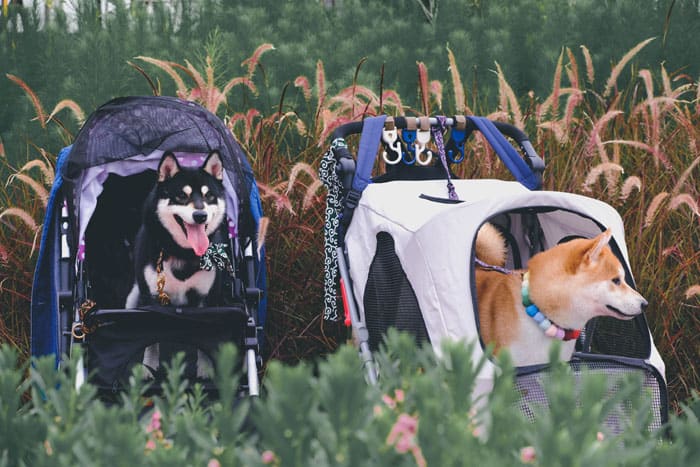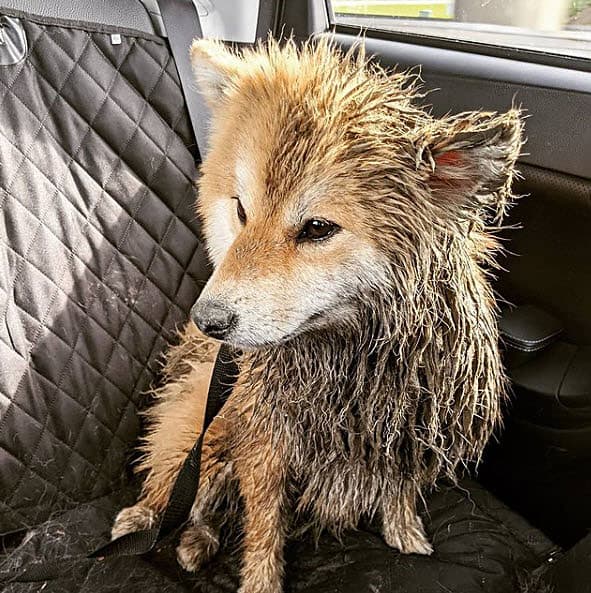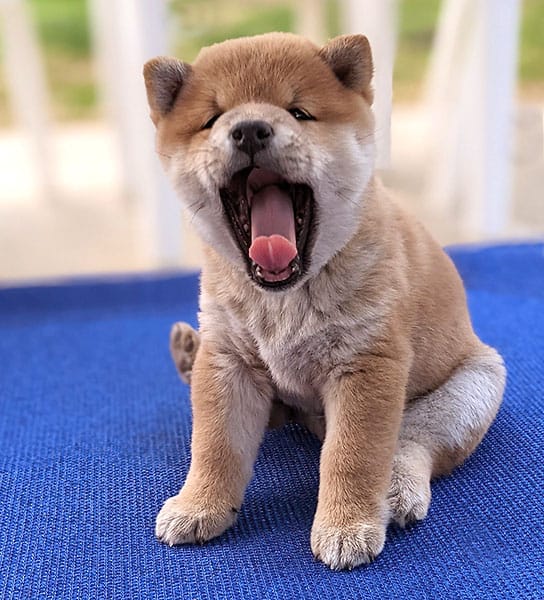04/03/2022 By Jennifer Tsukamoto
On occasion, our posts contain affiliate links. However, we only recommend products that we truly believe in. For more information, visit my privacy policy page.
The Shiba Inu is one of the most beautiful dogs in the world.
Unfortunately, as their popularity increases so does the breeding of not-so-beautiful Shibas. (inexperienced breeders / puppy mills)
There are simply not enough reputable and ethical Shiba Inu breeders to fill the increasing demand for puppies.
And the only way to solve this dilemma is through awareness (avoid puppy mills) and encouraging / helping a new generation of Shiba Inu breeders navigate through the rough waters of preservation breeding.
What Is Preservation Breeding?
Preservation breeding is simply a more “serious” title of breeding purebred dogs since breeding any purebreds is essentially an action to preserve particular traits of a dog breed.
However this is where a critical distinction comes forth.
Breeders that call themselves preservation breeders are way more likely to be seriously committed to bettering the breed or at the very minimum preserving the breed to the best degree possible with the available breeding stock.
This means a preservation breeder understands:
- Breed conformation / standards
- Breed health / genetic defects
- The importance of testing (health, DNA)
- The importance of pedigree
- The importance of genetic compatibility
- The importance of mating to achieve goals
- The importance of honesty and transparency when dealing with other breeders as well as puppy homes
- “Kennel Blindness” and how to avoid it
- Preservation breeding is serious commitment and done solely for the love of the dog breed
- Preservation breeding will not be a source of income, but often times a deflating drain to it.
Jogoso Shiba Inu
Do You Have What It Takes to Be a Shiba Inu Preservation Breeder??
Before delving into a detailed step-by-step guide on what it takes to be a Shiba Inu preservation breeder, it’s probably easier to first see if you’d even be a candidate by considering the following factors:
Being a Shiba Inu preservation breeder takes a lot of work, knowledge, and MONEY.
But mostly, it takes an immense love of the breed.
You have to be committed to doing whatever necessary to ensure you are a good steward of the breed.
Don’t even think about breeding any dog unless you seriously believe you have the knowledge and commitment to actually improve the breed.
You also need to be prepared to take losses when you need to and move on.
Shibas that don’t meet standards shouldn’t be bred and need to be placed in pet homes.
For some beginning Shiba Inu breeders, that means starting again from scratch.
Furthermore, you need to be prepared to deal with health issues financially as well as emotionally.
Complications, illness, and death are the not so fun aspects of dog breeding that you need to be ready for that well in advance.
As a rough ballpark figure, you’ll need at a minimum, 15k to start a breeding program and way more than that to cover unexpected expenses if necessary.
If at this point, you still believe you have what it takes to be a Shiba Inu preservation breeder – First of all, “thank you” for your interest in preserving Shiba Inus! Secondly, read on to learn more.
10 Components To Being a Shiba Inu Preservation Breeder
#1 – Shiba Inu Breed Knowledge
If you want to be a Shiba Inu “preservation” breeder, it makes sense to thoroughly understand what you are trying to preserve.
To learn this you’ll need to study EVERYTHING you can on Shiba Inu breed confirmation and standards.
You’ll need to understand canine anatomy, structure, balance, correctness, movement. And you need to know it well.
Having a perceptive eye for the tiniest details are crucial for a good breeder.
Though most of the original information was published in Japanese, many translations are available to study.
To the Japanese, respect is a trait that’s of utmost importance to them as a society therefore breeding Shiba Inus should be done to show respect for the breed as well as the culture of origination.
By understanding the Japanese culture, you’ll be better equipped to understand the true essence of the Shiba Inu breed of dog.
This essence not only concerns the outwardly appearance of the dog, but also the refined and nuanced character of Shiba.
The Japanese define this essence using the following three attributes;
kan-i, ryo-sei, and soboku.
Kan-i – Boldness and braveness melded with composure and mental fortitude.
Ryo-sei – Good nature, gentle dispostion
Soboku – Refinement in simplicity with a sober elegance
Also important, is understanding health issues that affect the breed and your plan to manage / treat it when necessary.
Managing the risks of genetic diseases rely on testing.
Without thorough testing, you’ll just be breeding “blindly” and hoping for the “best” when you’re more likely to get the worst at one point or another.
Genetic knowledge is equally critical in understanding test results and how you’ll move forward with your breeding plan.
If terms like homozygosity, heterozygosity, incomplete dominance seem foreign to you – you’re not quite ready to become a Shiba Inu preservation breeder.
Links To Learn About Shiba Inu Standards:
#2 – Dog Breeding Knowledge / Experience
Successful dog breeding requires a LOT more knowledge than many people assume.
It’s critically important to understand what is involved in breeding before attempting any mating.
Ideally, you should gain experience of the process from a mentor or a reputable dog breeder (even though it may involve another breed of dog).
The more hands on experience – the better.
There’s a lot more involved than copulation and whelping.
You need to consider what your goals are and what type of dogs you have to work with.
Are you going to mate out to an existing stud you have or have stud service from a genetically compatible match?
Frozen sperm and theriogenology?? Then you’ll need to deal with the logistics of shipping the sperm safely, transcervical insemination or artificial insemination.
You’ll need to the know basics of female heat cycles, ovulation, progesterone levels, luteinizing hormone levels.
You’ll also need to understand what a mother needs during pregnancy like enhanced nutrition, supplements, and vet care.
Of course then there’s the supplies you’ll need such as whelping pen,
And yet there’s more.
Complications are never fun or inexpensive…
Are you prepared to handle the event of something going wrong?
You’ll need to be prepared to bring the mother in to an emergency vet if she experiences serious complications and needs an emergency C-section.
That’ll cost quite a bit depending on your vet.
Other complications from labor include:
- Eclampsia
- Dystocia (breeching, other complications)
- Amniotic sac and umbilical Problems
- Mastitis
- Hemorrhaging / reperfusion Injury
- Retained placenta and or retained puppies
- Metritis
- Gestational diabetes
Not over yet…
You’ll need to come up with solid puppy contracts, health certificates / guarantees, working with A.K.C. registration.
It’s so true that everyone’s “gotta start somewhere” – just make sure you are armed and ready with the knowledge, tools, and experience to achieve this as best and more importantly, as safely, as possible.
Links to Educational Resources on Dog Breeding Topics:
Jogoso Shiba Inu – WincOnline Design and Photography
#3 – Mentor / Community
Finding a mentor to guide you on your breeding path is by far one of the most important components of succeeding in your program.
Shiba Inu breeders that have experience in showing and breeding can teach you things that can’t be easily learned from self-learning methods.
They’ll guide you through the twists and turns of the show dog world and give you insight on how breeding politics work and how to best embed yourself to the “good side” of the breeders you’d like to work with in the future.
Most importantly, they can help you develop an “eye” for evaluating Shibas and avoid “kennel blindness”.
Also, be sure to connect with the greater show dog / Shiba community in your area . Attend dog shows.
Join local Shiba Clubs.
Help out at Shiba Inu rescues if there are any in your area.
The more you connect and engage, the better.
How To Find Shiba Inu Mentors
The first step in finding a suitable mentor is to research mentors first in your area.
You’ll eventually want to visit the mentor in person and eventually attend dog shows, events, etc.
Hopefully, you’ve already been attending dog shows in your area which will make reaching out to potential connections much easier.
Then simply contact breeders and start a dialogue with them to see where it goes.
You’ll likely get much better results if you learn whatever you can about the breeders program, achievements, and goals first before initial contact.
Also, be sure to have your breeding plan finished so you can share that with the breeder. Study up on breeder “lingo” as much as possible to make a good first impression.
Don’t take it personally, if you can’t find a mentor right away. Breeders lead busy lives and can’t always return communications right away.
Just keep trying and always, always be polite and positive.
If the breeder’s just not feeling it – just thank them for their time and graciously move on.
Links to the Shiba Inu Community:
Functional Breeding Facebook Group
#4 – Comprehensive Breeding Plan
Creating a breeding plan is one of the first and most important steps to take.
By having a detailed plan addressing your goals, and a plan of action will give you a clear picture of what you’ll be dealing with and what you need to achieve it.
A breeding plan will need to include:
- Your breeding goals
- Where you’ll get your foundation stock, brood bitch
- The costs of everything (dogs, tests, supplies, vet bills, showing costs if applicable)
- How you’ll ensure genetic compatibility via tests, lineage,
- Whelping plan of action
- Puppy weaning, socialization, vet checks, vaccinations
- Back up course of actions when various things go wrong
suzanne ozasa – jogoso shiba
Start with a quality foundation brood female. She should be typical in body, head type, well-constructed, healthy, and capable of attaining a championship. She should possess strength, medium to large size, substance, and good bone mass. Because of her strength and body mass, a foundation female like this has versatility. The owner can couple her with varying type stud dogs and achieve reasonable success in each litter.
#5 – Money – A Whole Lotta Spending Money
In a perfect world, nobody would call dog breeding a “business” – simply because a businesses main objective would be to earn money.
However, a preservation breeding program’s main objective would be to preserve and better a breed.
So any breeder / entity that thinks breeding is a “business” may be a breeder / entity that has misaligned goals from a true preservation breeder.
To put it bluntly, preservation breeding almost always costs more than it receives from any income selling puppies.
In some cases, the costs to revenue balance tips the scales to the extremes.
This is usually due to a breeder that spares no expense in providing the best for his / her dogs, while at the same time having very few puppies to sell due to kennel size, health issues, or simply small litter / infrequent mating.
For most preservation breeders, having a happy medium and at least getting close to “breaking even” is a noble goal.
Because of average litter size, breeding Shiba Inus will “typically” cost way more than breeding dogs that have larger litter sizes like Retrievers or Mastiffs.
[How Much Does It Cost To Start a Shiba Inu Preservation Program]
The costs to start a Shiba breeding program depends on your location, your goals, and the availability of promising “foundation” stock.
A rough ballpark would be around 10-15k.
Additionally, you’re going to off course need extra funds for any unforeseen events and emergencies. So having an additional reserve of at least 15k is important as well.
If you think these costs are high, it’s because they are.
Taking care and being responsible for the lives and well-being of other living things comes with a tremendous cost all the way around.
And if you’re not in the position to do so financially or otherwise, it’s okay. Perhaps you’ll be able to take on the responsibility sometime later in your life.
Whatever you do, don’t take on a responsibility you’re not ready for. Period.
[Rough Example of Initial Expenses Based on ONE Dog]
- Female brood of good / high quality, full registration ($5,000)
- Supplies to make home suitable for amount of dogs in program ($700 per dog)
- Health and DNA Testing ($1150 per dog)
- Registration Fees ($50 per dog)
- Microchipping ($30 per dog)
- Vet exam ($90 per dog)
- Medications (heartworm, fleas / ticks, etc) ($300 per dog)
[Costs of Mating / Whelping]
- If no studs in your program
- Stud fee ($2,500)
- *If Stud is not in your vicinity, then the following extra costs:
- Semen Collection ($400)
- Semen Freeze ($300 + $95 yearly storage cost)
- Semen Shipping and Handling (Prep) ($350)
- For Females:
- Ultrasound ($300)
- X-Rays ($200)
- Progesterone testing ($350)
- TCI Transcervical Insemination x 2 ($550)
- Artificial Insemination ($500)
- Or “Free” if stud owner agrees to first puppy pick of the litter
- Whelping pads and supplies ($275)
- Food ($200)
- Dewormer / medicine ($135)
- First vet visit ($100)
- Puppy supplies (collars, leashes, toys, blankets, beds) ($200)
- Puppy / litter registration ($100)
So, ending estimate for starting the program and first mating is roughly $14k to $15k if you need to pay for a stud and semen freezing / shipping services. Costs will be less if you own a stud or have puppy pick agreement with owner of stud you’d like to use.
Be aware this list is non-exhaustive and prices can vary from region to region.
Also, these costs are assuming “everything went well and as planned”.
You also need a substantial amount of back up funds in case emergency veterinarian care and treatment is necessary.
#6 – Suitable Environment / Space
Not many humans nor dogs enjoy living in cramped quarters.
Which is why space is a critical component in having a productive dog breeding environment – and the more space the better.
While puppy mill type operations usually keep dogs confined in tiny “cages”, reputable breeding programs give their dogs as much space as possible with many breeders allowing their dogs full reign of their own living quarters.
– Jogoso Shiba
You need to assess your space and environment to determine the limits of your breeding program.
If you have a few acres, you obviously can expand to more dogs over time.
But if you have a typical suburban living situation with an average sized yard then you’d obviously be limited in the total amount of dogs you can comfortably accommodate.
Ideally, the dogs should never be confined to small kennels for long periods of time and instead live indoors with their human family for best socialization.
Having kennels available is handy for certain occasions but it also increases the chance of “relying” on the kennel too much resulting in a Shiba that has less chance for interaction and socialization.
All key parts to a happy and emotionally balanced dog.
Do you have enough “house” to share with adult Shibas and puppies? It’ll be an obvious “no” if you live in a condo or even a townhouse. (You may be able to manage a tiny breeding program with no more than adults if you plan accordingly)
Also having a fenced yard is very important with Shiba Inus as their hunting instincts cause them to be notorious “bolters”.
#7 – Time and Energy
Most preservation breeders treat their work like a full-time job. And they should.
Preservation breeding is not something that should be done in your “free time” as your dogs and puppies will have you on a full-time shift.
So if you have a busy career with human children as well, preservation breeding may not be the best fit – unless on a “micro” scale (a single brood bitch, or a pair).
With much of the world’s business climate being shifted by Covid-19 – many have found themselves working from home which would facilitate preservation breeding better than being office bound for 40 hours plus drive time every week.
#8 – Support System
Preservation breeding is a special calling for only a very few dedicated humans who are willing to go the extra mile for their beloved dog breed.
It’s essential that other members of your family are onboard to support you and help you when necessary.
If there’s someone in the household that objects to your project or is simply unsupportive of your endeavors – it’s better to wait until you’re in a situation with more support.
Negative tension and disagreements are not good for humans and definitely not good for the innocent dogs we care so much for.
Also, be sure you’ve made positive connections with other breeders / mentors who can help you navigate through your first breeding and beyond.
There’s also quite a bit of online breeding support groups that can be valuable so long as you know how to filter out unproven advice and of course the occasional troll.
#9 – Good Physical Health
Dog raising, breeding, and rearing is a physically demanding job – especially with bigger dogs.
Thankfully, Shibas are on the small / medium end of the dog size spectrum. However, they sure can be a lot of Shiba in whatever body size they possess.
This is why it’s important to be physically healthy and capable of attending to the never ending daily needs of the dogs and puppies in your care.
From training, to walking, to cleaning – the physical demands can at times be strenuous to even the young and fit.
Understanding your physical health and limits is important before taking on great responsibility.
Have a back up plan that includes support for times when you may be unable to properly care for your dogs.
#10 – Sound Moral Character
Deciding to become a preservation breeder is a serious commitment.
And being a person of integrity goes a looonnnnnnnng way in this field.
You should be doing your very best to serve the needs of your dog breed first and foremost.
This means that the health of our dogs and future dogs should come BEFORE financial considerations.
And so you’ll have to be prepared to make sacrifices and take losses when necessary.
It means you won’t “take a chance” and breed a dog (no matter how much you paid) that is a known carrier of genetic disease and instead either keep him / her as a pet or find a suitable pet home.
Most preservation breeders really do consider their dogs need first before anything else.
However, you’ll always encounter some that will knowingly breed their dogs with known genetic diseases lurking in their chromosomes simply for positive cash flow.
And it’s a true shame.
In the world of dog showing, it’s common knowledge that you’ll be highly likely to encounter people that have negative and unproductive attitudes.
These types usually don’t believe in sharing their knowledge but instead keep it within themselves as a source of pride or what they believe is “power”.
Ridiculously adorable Shiba Inu puppy from Jogoso Shiba Inus
In Closing
Preservation breeding depends on transparency, education, and helping other breeders be the best they can be.
Hopefully, your path will be filled with caring and open mentors instead of self righteous road blocks.
The very best thing you can do of course is to be a good person yourself. Be honest, be kind, and be generous with your sharing of knowledge.
And for that we all can make a difference in the lives of the dogs we adore. That’s why we’re doing this thing right?
Thanks for visiting Myfirstshiba.com! We do our very best in providing our readers with awesome content about our beloved Shiba Inu breed. Some of our articles include reviews and recommendations to our favorite products. We do occasionally earn commissions from certain affiliate links that help support our work and mission. Thanks again for visiting. Shiba Kisses To All!
